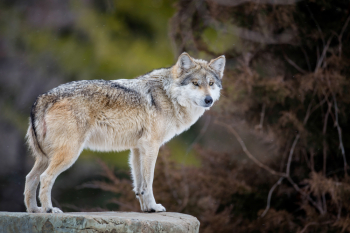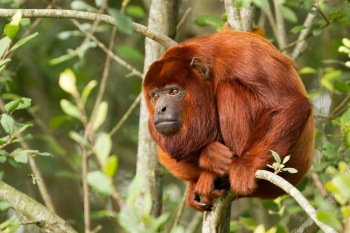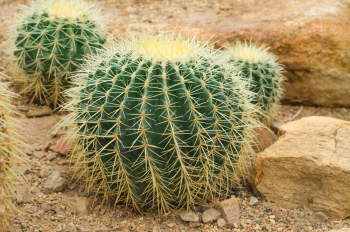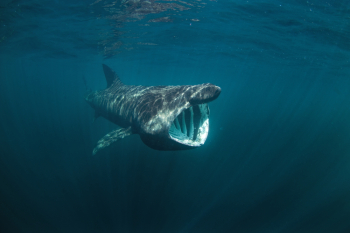Environment: Endangered Species
An endangered species is a species of animal or plant that is seriously at risk of extinction. The International Union for Conservation of Nature (IUCN), an organization funded by the European Commission, is regarded as a global authority on the world’s living species and maintains a list of the world’s endangered species. More than 8,000 scientists from 162 countries make up the IUCN’s Species Survival Commission, which designates as “threatened” any species falling within the critically endangered, endangered, and vulnerable categories. These species are assigned categories based on the level of extinction risk. Identifying a species as threatened and assigning it to one of the related categories is a complicated process, involving the analysis of multiple interconnected variables. These include population size, geographic range, and the number of breeding adults.
Risk Factors
Population Size
There are a variety of factors that put these plants and animals at risk. Most species placed on endangered lists have very small populations with a small number of breeding adults. In addition to being a problem in its own right, this can lead to a loss of genetic variation among species, since small populations of animals are forced to inbreed. The young are subsequently left vulnerable to disease and often fail to reach maturity.
Habitat
Habitat can also be a risk factor. From the clear-cutting of the Amazon rainforest for the purpose of grazing cattle to overhunting and overfishing, living species are under increasing strain in the modern world. When humans build homes, office buildings, and fun parks, preserving space for plants and animals is frequently not a priority. Loss of habitat creates a ripple effect, with animals often deprived of shelter and primary food sources that end up placing them in a vulnerable state.
Range
A plant or animal's range is a function of its habitat and is also used to assess a population's survival risks.
Environmental Factors
Finally, environmental factors such as pollution, a changing global climate, and increasingly extreme weather events are other factors placing a strain on the world’s plants and animals. Before a plant or animal is considered endangered, these factors are taken into consideration. Awareness of the problem leads to a search for solutions—and some measures are being enacted—although current trends suggest that the number of endangered species will only increase as time goes on.
Mexico’s Threatened Species
Note: Numbers reflect current estimates and may vary by source.
Top Three Endangered Mammals of Mexico
Vaquita Porpoise
This rare marine species is found only in Mexico’s Gulf of California, where it lives in the far northern area of the gulf known as the Sea of Cortez in shallow waters near the coast. Critically endangered, Vaquita porpoises are denoted by dark rings around the eyes and mouth, and it is the smallest of the world’s cetaceans (aquatic mammals). Along with an extremely small population, other factors threatening the shy species include illegal fishing using gillnets, which are large panels of netting that hang vertically and trap and kill the animals. Water pollution and habitat destruction are additional factors in this critically endangered species’ decline, and predictions state that the species’ extinction is imminent.
Jaguar
Endangered jaguars are threatened due to loss of habitat, particularly deforestation, as well as illegal hunting by farmers and ranchers protecting their livestock. The largest wild cats in North and South America, jaguars are also hunted for their fur. An additional threat to the cats is the demand for parts used in traditional Chinese medicine and for decoration, particularly the cats’ teeth, believed to symbolize strength, protect the wearer from evil, and imply status. These threats to the jaguars’ survival involve illegal international trade and large amounts of money.

Mexican Grey Wolf
This subspecies of the grey wolf has been endangered for decades and was nearly killed into extinction by farmers and ranchers aiming to protect their livestock. A small population existed only in captivity though was eventually reintroduced into the wild after gaining protected status and their numbers increased through breeding in captivity. Despite these efforts, this smallest of all wolf species remains one of the most endangered animals in North America.

Other Endangered Mammals of Mexico
Many of Mexico’s endangered mammals are threatened due to loss of habitat, particularly deforestation. This is true of the mantled howler monkey, which is also affected by fragmentation of its natural habitat. Small, separated sections of land limit available food and mates, with the monkey also hunted for the pet trade. Some critically endangered species, including the Chiapan climbing rat and the Cozumel Island raccoon, exist only in certain areas and have small numbers, both being factors that led to their endangered status. The Angel Island mouse (aka La Guarda deermouse) is critically endangered and may be extinct, the victim of both a limited range and competition among other rodents for food. Becoming prey for domestic cats, some of which were introduced to isolated areas, is another issue that impacted the mouse as well as the Burt’s deer mouse. The Alcorn’s pocket gopher is native to Mexico and though it is a protected species due to being critically endangered, it is seen as a pest by farmers and ranchers and routinely killed. The banana bat (also known as the trumpet-nosed bat or Colima long-nosed bat for its elongated nose) is endangered, mainly due to loss of habitat, which also led to a reduction of its food source. The bats were also killed during Mexico’s concerted effort to eliminate vampire bats, which sometimes spread rabies.

Endangered Plants of Mexico
Many problems have combined to threaten a large number of endangered plants in Mexico, among them the moss Acritodon nephophilus and flowering plants Aegiphila skutchii, Aegiphila panamensis, and Aegiphila monstrosa. In fact, the amount of the world’s endangered plants outnumbers endangered birds, mammals, and amphibians combined. In Mexico, loss of habitat through human activity, climate change, and water pollution are the main issues. Additionally, fragmentation of a plants’ range brought about by destruction of swaths of land limits the plants’ health and, subsequently, the health of pollinators that no longer find the plants were they once were. Plant species that live in the country’s tropical forests face the greatest threat through deforestation due to logging, like the Colima fir tree, or for agricultural use including the grazing of livestock. Other plants have commercial value and are illegally harvested for use in medicines or for drug use. This includes false peyote, which has hallucinogenic properties. Complicating the issue is the fact that Mexico’s constitution recognizes the rights of indigenous people to harvest plants for traditional medicinal use. Some plants are coveted for ornamental use, like the golden barrel cactus, which is endangered in the wild though is widely cultivated commercially.
Endangered Amphibians of Mexico
Several salamander species top the list of Mexico’s endangered amphibians. These include the Acultzingo minute salamander, Adelos salamander, admirable false brook salamander, and the Ahuitzotl salamander. Loss of habitat due to deforestation for logging and agricultural use are the main threats. The Adler’s mottled treefrog is endangered as well, due to loss of its habitat—Mexico’s tropical and subtropical forests. Small, isolated populations, like the Ambystoma altamirani, a species of mole salamander that lives in the streams and lakes of high-elevation areas of central Mexico, are endangered through not only loss of habitat, but also by invasive species or the introduction of exotic (non-native) species. Small populations also tend to inbreed, often resulting in young that are vulnerable to disease and fail to reach maturity.

Endangered Fish of Mexico
An early 21st century study by the International Union for Conservation of Nature (IUCN), which maintains a “red list” of endangered species throughout the world, estimates that nearly 40 percent of Mexico’s freshwater fish are endangered, some critically. Several species of silverside, called a “white fish” in Spanish, are valued for use in the country’s traditional cuisine and have been for hundreds of years. These include the bigmouth, longjaw, and blacknose silverside species, which are also impacted by overextraction of water, water pollution, and invasive species. Other endangered Mexican fish are the blind swamp eel, the Yaqui catfish, the Balsas splitfin, and the basking shark. The shark feeds on plankton near shore, where it is killed by boat collisions or by entanglement in fishing nets. The shark is also commercially fished for food and its liver oil.
The totoaba is critically endangered and, despite a Mexican fishing ban enacted in 1975, illegal fishing and little to no enforcement of the ban continue to impact the species. The degradation of the fishes’ Gulf of California habitat is an additional factor in their decline. The totoaba’s large swim bladders are considered a delicacy in China, resulting in a highly valuable commodity that is illegally exported. Totoaba meat is also valued in Mexico. A new aquaculture industry has begun in Mexico for farm-raising of the totoaba, and this may enable legal exportation as well as restocking of the species to native waters, which has begun, though the future of the burgeoning industry is unclear and reliant on several factors. Until then, gillnets used to illegally catch the coveted fish also entangle and kill the critically endangered vaquita porpoise, one of the country’s most endangered mammals.
Article written for World Trade Press by Felicia Topp.
Copyright © 1993—2024 World Trade Press. All rights reserved.

 Mexico
Mexico 